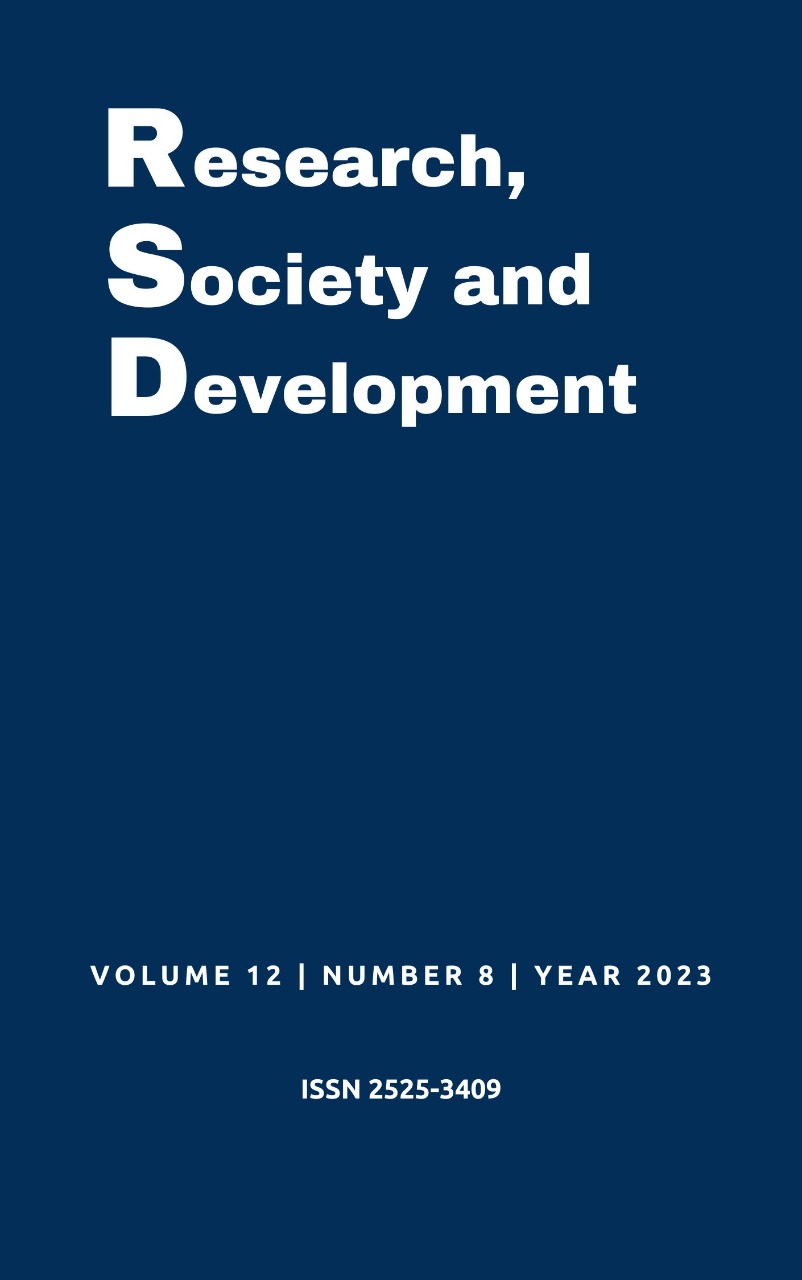Coadjuvant treatment of botulinum toxin in bruxism
DOI:
https://doi.org/10.33448/rsd-v12i8.42852Keywords:
Bruxism, Botulinum Toxins, Type A, Complementary therapies.Abstract
Orofacial harmonization plays a key role in addressing functional changes in the face and mouth, aiming to restore functionality and biomechanical balance to improve the patient's quality of life. In addition to treating aesthetic problems, orofacial harmonization brings functional benefits to the masticatory, respiratory and vocal systems. On the other hand, bruxism, characterized by grinding or clenching of the teeth, can lead to serious consequences for the oral and general health of the individual, such as intense pain and wear on the teeth. Botulinum toxin has been widely used as an adjuvant treatment in these cases, relaxing the masticatory muscles, especially the masseter, providing pain relief. The safe and effective application of botulinum toxin in this context is paramount and, in this sense, the expertise in orofacial harmonization stands out by providing a personalized approach for each patient, making this combination a promising and minimally invasive option in the treatment of bruxism and its negative effects. . Thus, the objective of this narrative review of the literature is to comprehensively analyze the scientific evidence available on the use of botulinum toxin as an adjuvant treatment in bruxism.
References
Ågren, M., Sahin, C., & Pettersson, M. (2020). The effect of botulinum toxin injections on bruxism: A systematic review. Journal of oral rehabilitation, 47(3), 395–402.
Anandan, C., & Jankovic, J. (2021). Botulinum Toxin in Movement Disorders: An Update. Toxins, 13(1), 42.
Beddis, H., Pemberton, M., & Davies, S. (2018). Sleep bruxism: an overview for clinicians. British dental journal, 225(6), 497–501.
Bellows, S., & Jankovic, J. (2019). Immunogenicity Associated with Botulinum Toxin Treatment. Toxins, 11(9), 491.
Bulanda, S., Ilczuk-Rypuła, D., Nitecka-Buchta, A., Nowak, Z., Baron, S., & Postek-Stefańska, L. (2021). Sleep Bruxism in Children: Etiology, Diagnosis, and Treatment-A Literature Review. International journal of environmental research and public health, 18(18), 9544.
Choudhury, S., Baker, M. R., Chatterjee, S., & Kumar, H. (2021). Botulinum Toxin: An Update on Pharmacology and Newer Products in Development. Toxins, 13(1), 58.
Fernández-Núñez, T., Amghar-Maach, S., & Gay-Escoda, C. (2019). Efficacy of botulinum toxin in the treatment of bruxism: Systematic review. Medicina oral, patologia oral y cirugia bucal, 24(4), e416–e424.
Hardy, R. S., & Bonsor, S. J. (2021). The efficacy of occlusal splints in the treatment of bruxism: A systematic review. Journal of dentistry, 108, 103621.
Hosgor, H., & Altindis, S. (2020). Efficacy of botulinum toxin in the management of temporomandibular myofascial pain and sleep bruxism. Journal of the Korean Association of Oral and Maxillofacial Surgeons, 46(5), 335–340.
Kwon, K. H., Shin, K. S., Yeon, S. H., & Kwon, D. G. (2019). Application of botulinum toxin in maxillofacial field: part I. Bruxism and square jaw. Maxillofacial plastic and reconstructive surgery, 41(1), 38.
Lobbezoo, F., Ahlberg, J., Raphael, K. G., Wetselaar, P., Glaros, A. G., Kato, T., Santiago, V., Winocur, E., De Laat, A., De Leeuw, R., Koyano, K., Lavigne, G. J., Svensson, P., & Manfredini, D. (2018). International consensus on the assessment of bruxism: Report of a work in progress. Journal of oral rehabilitation, 45(11), 837–844.
Martins, M. G. B., Lima, N. S., Araujo, L. K. O., Lucena, M. R., Araújo, I. A. de O., Ribeiro, D. S. S., Vieira, É. C. da C., Silva, S. de J., Steinhauser, H. C., & Carvalho, R. F. (2022). Bruxismo do sono em pacientes odontopediátricos: uma revisão integrativa. Research, Society and Development, 11(14), e462111436722.
Ondo, W. G., Simmons, J. H., Shahid, M. H., Hashem, V., Hunter, C., & Jankovic, J. (2018). Onabotulinum toxin-A injections for sleep bruxism: A double-blind, placebo-controlled study. Neurology, 90(7), e559–e564.
Rother, E. T. (2007). Revisão sistemática x revisão narrativa. Acta Paul. Enferm, 20(2).
Sendra, L. A., Montez, C., Vianna, K. C., & Barboza, E. P. (2021). Clinical outcomes of botulinum toxin type A injections in the management of primary bruxism in adults: A systematic review. The Journal of prosthetic dentistry, 126(1), 33–40.
Serrera-Figallo, M. A., Ruiz-de-León-Hernández, G., Torres-Lagares, D., Castro-Araya, A., Torres-Ferrerosa, O., Hernández-Pacheco, E., & Gutierrez-Perez, J. L. (2020). Use of Botulinum Toxin in Orofacial Clinical Practice. Toxins, 12(2), 112.
Shim, Y. J., Lee, H. J., Park, K. J., Kim, H. T., Hong, I. H., & Kim, S. T. (2020). Botulinum Toxin Therapy for Managing Sleep Bruxism: A Randomized and Placebo-Controlled Trial. Toxins, 12(3), 168.
Solish, N., Carruthers, J., Kaufman, J., Rubio, R. G., Gross, T. M., & Gallagher, C. J. (2021). Overview of DaxibotulinumtoxinA for Injection: A Novel Formulation of Botulinum Toxin Type A. Drugs, 81(18), 2091–2101.
Sumodjo, P. R. P. A., Suguhihara, R. T., & Muknicka, D. P. (2023). O envelhecimento facial e a harmonização orofacial – uma revisão narrativa da literatura. Research, Society and Development, 12(5), e15312541591.
Tsetlin V. I. (2020). Acetylcholine and Acetylcholine Receptors: Textbook Knowledge and New Data. Biomolecules, 10(6), 852.
Vavrina, J., & Vavrina, J. (2020). Bruxismus: Einteilung, Diagnostik und Behandlung [Bruxism: Classification, Diagnostics and Treatment]. Praxis, 109(12), 973–978.
Downloads
Published
Issue
Section
License
Copyright (c) 2023 Adriana Angelica de Paula Vieira; Roberto Teruo Suguihara; Daniella Pilon Muknicka

This work is licensed under a Creative Commons Attribution 4.0 International License.
Authors who publish with this journal agree to the following terms:
1) Authors retain copyright and grant the journal right of first publication with the work simultaneously licensed under a Creative Commons Attribution License that allows others to share the work with an acknowledgement of the work's authorship and initial publication in this journal.
2) Authors are able to enter into separate, additional contractual arrangements for the non-exclusive distribution of the journal's published version of the work (e.g., post it to an institutional repository or publish it in a book), with an acknowledgement of its initial publication in this journal.
3) Authors are permitted and encouraged to post their work online (e.g., in institutional repositories or on their website) prior to and during the submission process, as it can lead to productive exchanges, as well as earlier and greater citation of published work.


